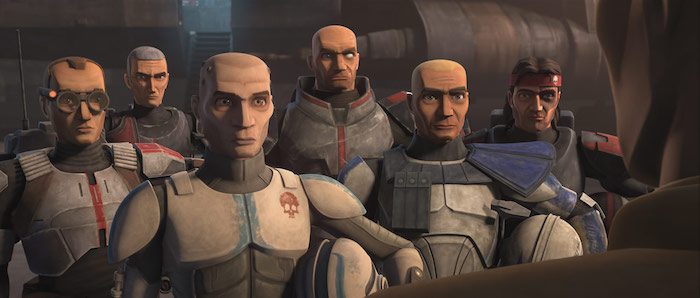The new Signals From The Frontline episode that was released last night cover some game systems that don’t have anything to do with the grimdark universe of 40k, and it got me excited about a game I have recently started playing on the side. Usually I am trying to make GSC work on the tournament tables at my local store, but sometimes I just need a break from 40k. I think a lot of players get to this point in their hobby, and it can be good to do a total reset by jumping into a new miniatures game. That game for me, most recently, is Star Wars Legion. I bought into Legion when it first released, but it never really took off in this area until recently. One of the gaming groups in my area, who mainly play AoS, started giving Legion a try and I figured what could it hurt to own a small army and give it a go as well.
After a single game of Legion I was hooked. The game feels fast paced, balanced and all the units feel like they were pulled directly from the Star Wars universe. Below are a few of the standout things that I am loving about playing Legion:
Force Users:
If you are a fan of Star Wars than this is going to be a huge draw to play Legion. The Force Users in this game are extremely fun to put on the tabletop. It is extremely rewarding to Force Push an enemy unit out of cover to then follow up with throwing your Light Saber at them. Force Users in this game can be a huge offensive weapon, but can also be built to bolster your less Force sensitive units with things like Force Barrier.
Light Saber wielders feel like they are straight out of the Star Wars canon with their ability to deflect incoming blaster fire, their Force powers and the crazy amounts of damage they can put out. That isn’t to say Legion revolves around Force Users. A single model sprinting toward the enemy lines is rarely going to make it there intact. The weight of firepower in this game is generally enough to stop any foolish charges that would make the game feel less authentic. Your opponent doesn’t even need to completely remove your Force User from the table with the Suppression mechanic that is built into the game.
The Movement System:
Having all movements done from a unit leader, and then placing the remaining models in coherency around them, speeds up game play while still making tactical decisions about movement matter. By only needing to precisely move one model in each unit instead of 10-20 this game flows so smoothly. Movement of other models in the unit is still kept important through the games Cover system that can completely stop damage on your units, and this is extremely important to use efficiently. If a Jedi can get blasted off the table than a regular unit of troops don’t have great odds of survival sitting out of Cover.
Another rule that keeps movement important in this game is only being able to remove models from shooting that the firing unit can actually see. While I am not at this level currently, I can see how this will promote strategic planning when it comes to movement. Having units alive at the end of the game to actually score the mission objectives has felt tough for me, but I suspect it is because I am not using this very important game mechanic to my advantage.
Alternating Activation:
Legion’s token system feels like just the right amount of randomness thrown into an alternating activation rule set. You can, and absolutely should, build your army to get around choosing units to activate blindly from your stack of tokens, but there will always be some element of randomness to unit activation order during the turn. At first I thought that this would turn me off from the game, but I find I really enjoy planning how to mitigate pulling blindly from the token stack during a game.
Alternating activations also means that there is no sitting around for 30 minutes while your opponent does horrible things to your army with no chance for you to respond. No matter how hard you get hit you will have the opportunity to hit your opponent right back after one quick activation. Unfortunately, the downside to this can be seen when one player loses a couple of units quickly. This can knock their total activating units down to a level where their opponent has multiple activations at the end of the round with no response. Building enough activations into your army, and keeping enough activations on the table throughout the game, is a big deal in Star Wars Legion.
Army Building:
The army building options for Legion make creating unique armies extremely rewarding. All of the different equipment, weapons and upgrades all the units can take really make it easy to change the role of the same unit depending on how they are outfitted at the army building stage. With a multiple of heavy weapons options available a squads role in the game can drastically change from long range fire support to close range shotgun unit.
Other upgrades can make units better at shooting, defending or even just better at moving around the battlefield can drastically change a units function as well. This level of depth within the army building is extremely important to any miniatures game since many players get joy out of simply building army lists! It is even better when, like in Legion, the impact of these small changes to someone’s collection of models can really be felt on the tabletop.
Overall:
This game has been extremely fun to pick up and play. The overall investment to get to a full sized 800 points Legion army is extremely small when compared to games like 40k and AoS, but the smaller scale doesn’t take away any of the strategic game play. I am very excited to try my hand at a Legion tournament soon to truly see if this game holds up at the higher levels, but so far I am having a blast shooting my massed units of B1s into my opponent’s Commander to remove them from the game Turn 1.



